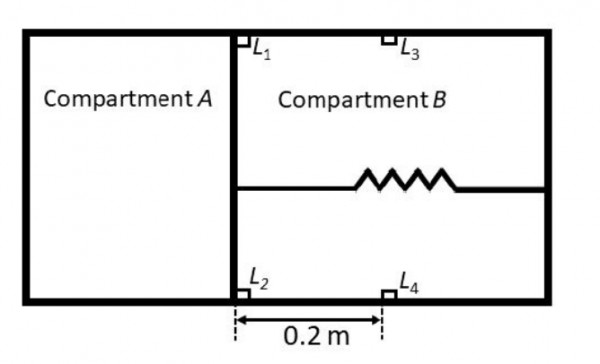An isolated system consists of two perfectly sealed cuboidal compartments $A$ and $B$ separated by a movable rigid wall of cross-sectional area $0.1 \mathrm{~m}^{2}$ as shown in the figure. Initially, the movable wall is held in place by latches $L_{1}$ and $L_{2}$ such that the volume of compartment $A$ is $0.1 \mathrm{~m}^{3}$. Compartment $A$ contains a monoatomic ideal gas at 5 bar and $400 \mathrm{~K}$. Compartment $B$ is perfectly evacuated and contains a massless Hookean spring of force constant $0.3 \mathrm{~N} \mathrm{~m}^{-1}$ at its equilibrium length (stored elastic energy is zero). The latches $L_{1}$ and $L_{2}$ are released, the wall moves to the right by $0.2 \mathrm{~m}$, where it is held at the new position by latches $L_{3}$ and $L_{4}$. Assume all the walls and latches are massless. The final equilibrium temperature, in $\mathrm{K}$, of the gas in compartment $A$, rounded off to $1$ decimal place, is $\_\_\_\_\_\_\_$
